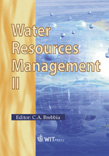Innovative Quality Control Strategies In Controlling Drinking Water Production
Price
Free (open access)
Transaction
Volume
61
Pages
6
Published
2003
Size
287.41 kb
Paper DOI
10.2495/WRM030121
Copyright
WIT Press
Author(s)
J. R. González-Velasco, U. Iriarte, R. López-Fonseca & J. I. Álvarez-Uriarte
Abstract
Innovative quality control strategies in controlling drinking water production J. R. GonzAIez-Velasco, U. Iriarte, R. Upez-Fonseca & J. I. ~lvarez-uriarte Department of Chemical Engineering, Faculty of Sciences, University of The Basque Country, Spain Abstract During water disinfection, due to the reaction between chlorine and natural organic matter, mainly humic substances (HS), several non-desired halogenated organic compounds, termed as disinfection by-products (DBPs), are formed. The present paper presents the results obtained as part of a larger project. The objective is to study the ability of certain spectrophotometric parameters, such as ultraviolet absorbance (UV 254 nm) and fluorescence (exc. 320 nm; emiss. 435 nm), in controlling DBPs precursors during drinking water production. The study has been carried out in a Spanish water treatment utility. Concentrations of humic substances, total organic carbon (TOC), and two spectrophotometric surrogates have been determined at different pl
Keywords





